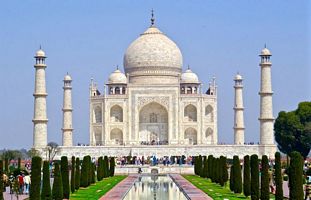India is one of the most prosperous nations in the world from a historical and cultural point of view. The countless races, religions, languages and cultures here make it a diverse and vibrant country. Hidden in this diversity are the nuances of Indian rituals and customs, which tell us where we come from and how we are guided.
In India, special rituals and customs are followed on every occasion, every festival, and every occasion. Be it birth, marriage, or death of someone, every moment has special meaning and significance. These rituals and customs connect us to our cultures, values and religious beliefs.
The meaning and importance attached to most Indian rituals reflects the respect and reverence for Aditya, natural things, and divine powers that occupy a place in society.
In this article we will discuss the various rituals and customs of India which are not only a part of the life of the people here, but also connect them with their traditional and cultural heritage.
India is a diverse country where many religions, castes and sects live with their unique customs and traditions. These customs and traditions connect us with our cultural heritage.
Hello/Hello
The word 'Namaskar' or 'Namaste' comes from Sanskrit, meaning 'I salute you'. This is a traditional Hindi way of greeting. When two people meet, they often join hands and say 'namaste'. It is a symbol of honor and respect in Indian culture.
Tilak
Tilak is a traditional mark applied on the forehead by Indian men and women. It is imposed for various religious and cultural reasons. The colors and shapes of the tilak may vary, representing different communities and religious sects.
Aarti
Aarti is a religious ritual in which a lamp is waved in front of the idol or picture of the God. Bhajans and kirtans are also performed during the aarti. It is an important religious practice in Indian culture which symbolizes devotion and respect towards God.
Offering flower garland
In India, while welcoming a guest, he is garlanded with flowers. This is a traditional welcoming method, making the guest feel honored.
Bindi
Bindi is applied on the forehead by women. It is a traditional and cultural symbol that represents a married woman, although nowadays it is also worn as a fashion.
Salutation in front of family and elders
It is important to respect family and elders in Indian culture. When the youth meet their elders, they often pay obeisance by placing their heads at their feet. This gives them blessings.
Lighting a lamp (diya)
In India, lamps are lit on any happy occasion, especially on festivals like Diwali. It symbolizes the victory of light and indicates the anticipation of defeating evil.
Top Stories
-

Discover Exciting Places to Visit in Agra, Uttar Pradesh - Your Ultimate Travel Guide
-

Explore Exciting Places to Visit in Mumbai, Maharashtra - Your Ultimate Travel Guide
-

Explore the Wonderful Places to Visit in Manali, Himachal Pradesh - Your Ultimate Guide!
-

Places to Visit in Solan Himachal Pradesh - Explore the Best Tourist Spots
-

Discover the Best Places to Visit in Kangra, Himachal Pradesh: A Traveler's Guide




